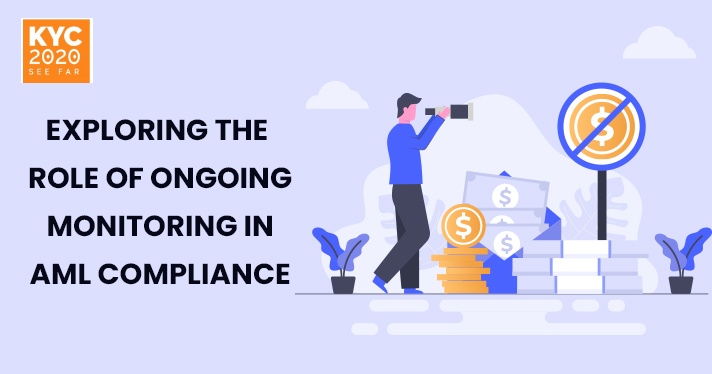Money laundering has become a pervasive concern in an era of technological advancements and global financial transactions. Criminal organizations and individuals constantly seek ways to legitimize their illicit funds, posing a threat to the integrity of financial institutions worldwide. Financial institutions and businesses implement Anti-Money Laundering – AML compliance programs to combat this growing menace. This blog post will delve into the significance of AML compliance programs and explore best practices for implementing robust strategies to counter money laundering effectively.
Understanding AML Compliance Programs
An anti-money laundering compliance program is a comprehensive framework of policies, procedures, and controls that financial institutions and businesses establish to detect, prevent, and report instances of money laundering and terrorist financing. These programs ensure compliance with applicable laws and regulations and safeguard the financial system’s integrity.
The primary objective of an AML compliance program is to identify and mitigate the risks associated with money laundering activities. By implementing effective AML measures, financial institutions can protect themselves from becoming unwitting accomplices to criminal activities, avoid severe legal and reputational consequences, and contribute to the overall integrity of the global financial ecosystem.
In the following sections, we will explore the best practices that underpin effective AML compliance programs, including risk assessment, written policies and procedures, customer due diligence, ongoing monitoring, employee training and awareness, and independent audit and review. By understanding and implementing these practices, organizations can establish robust defences against money laundering and significantly contribute to combating financial crime.
Best Practices for Effective AML Compliance
Risk Assessment: Conducting a comprehensive risk assessment is the foundation of any successful AML compliance program. This assessment involves identifying and analyzing the potential money laundering risks associated with the institution’s customers, products, services, and geographical locations. By understanding these risks, organizations can tailor their AML strategies accordingly.
Written Policies and Procedures: Developing clear and concise written policies and procedures is vital for effective AML compliance. These documents should outline the institution’s commitment to AML compliance, define the responsibilities of employees, and guide identifying and reporting suspicious activities. Regularly reviewing and updating these policies is essential to keep up with evolving regulatory requirements and emerging risks.
Customer Due Diligence (CDD): Implementing a robust CDD process is crucial for AML compliance. This involves assessing customer risk profiles, and monitoring for suspicious activities. Enhanced due diligence measures should be applied to high-risk customers, such as politically exposed persons (PEPs) and those from jurisdictions with weak AML controls.
Ongoing Monitoring: Establishing a system for ongoing monitoring of customers is essential. This involves implementing automated monitoring systems that can flag unusual patterns or activities. The monitoring process should be proactive, timely, and capable of detecting complex money laundering schemes.
Employee Training and Awareness: Educating employees about AML regulations, procedures, and emerging risks is crucial. Regular training programs should be conducted to ensure employees stay updated with evolving threats and compliance requirements. Encouraging a culture of vigilance and providing channels for reporting suspicious activities can empower employees to play an active role in preventing money laundering.
Independent Audit and Review: Regular audits and reviews of the AML compliance program are essential to identify weaknesses or gaps. External auditors can objectively assess the program’s effectiveness and offer recommendations for improvement. These audits help organizations comply with regulatory standards and enhance their AML efforts.
Benefits of AML Compliance Programs
AML compliance programs offer numerous benefits beyond the primary function of monitoring and detecting suspicious financial activities. Let’s explore some of these advantages:
Enhanced Reputation: Implementing a robust AML compliance program helps build trust and credibility among customers, investors, and stakeholders. It demonstrates a commitment to ethical business practices, regulatory compliance, and the fight against financial crime. A strong reputation for compliance can attract new business relationships and enhance existing ones.
Regulatory Compliance: AML compliance programs ensure adherence to relevant laws, regulations, and guidelines imposed by regulatory bodies. Organizations can avoid penalties, fines, and legal repercussions by staying compliant, protecting their financial stability, and avoiding potential damage to their reputation.
Risk Mitigation: AML compliance programs are designed to identify and assess risks associated with money laundering and terrorist financing activities. By understanding these risks, organizations can implement effective risk mitigation strategies. This proactive approach reduces the likelihood of being involved in illicit activities and minimizes associated risks.
Protection from Reputational Damage: Money laundering activities can tarnish the businesses’ reputation, leading to significant financial losses and loss of customer trust. AML compliance programs protect against reputational damage by preventing illicit funds from entering the organization, ensuring the company’s integrity remains intact.
Global Market Access: AML compliance programs enable organizations to access global markets and establish relationships with international partners. Many countries require compliance with AML regulations for conducting cross-border transactions. By adhering to these regulations, organizations can expand their market reach and seize international business opportunities.
Final Words!
In an ever-evolving landscape of financial crime, an effective AML program is a powerful shield to protect the integrity of financial institutions and the global economy. By following best practices, organizations can bolster their defences against money laundering and terrorist financing. With these measures in place, organizations can contribute to the fight against money laundering and fortify the financial system against criminal exploitation. Together, we can build a more secure and transparent future for global finance.
KYC2020 is vital in supporting financial institutions’ anti-money laundering compliance programs. By implementing KYC2020, institutions can access advanced AML Screening tools, robust data analysis, and enhanced risk assessment capabilities. This empowers them to efficiently identify and verify high risk customers, detect suspicious activities, and ensure compliance with AML regulations, safeguarding against financial crimes.






